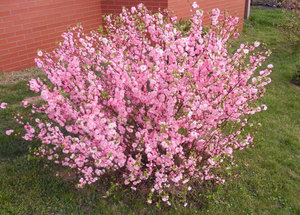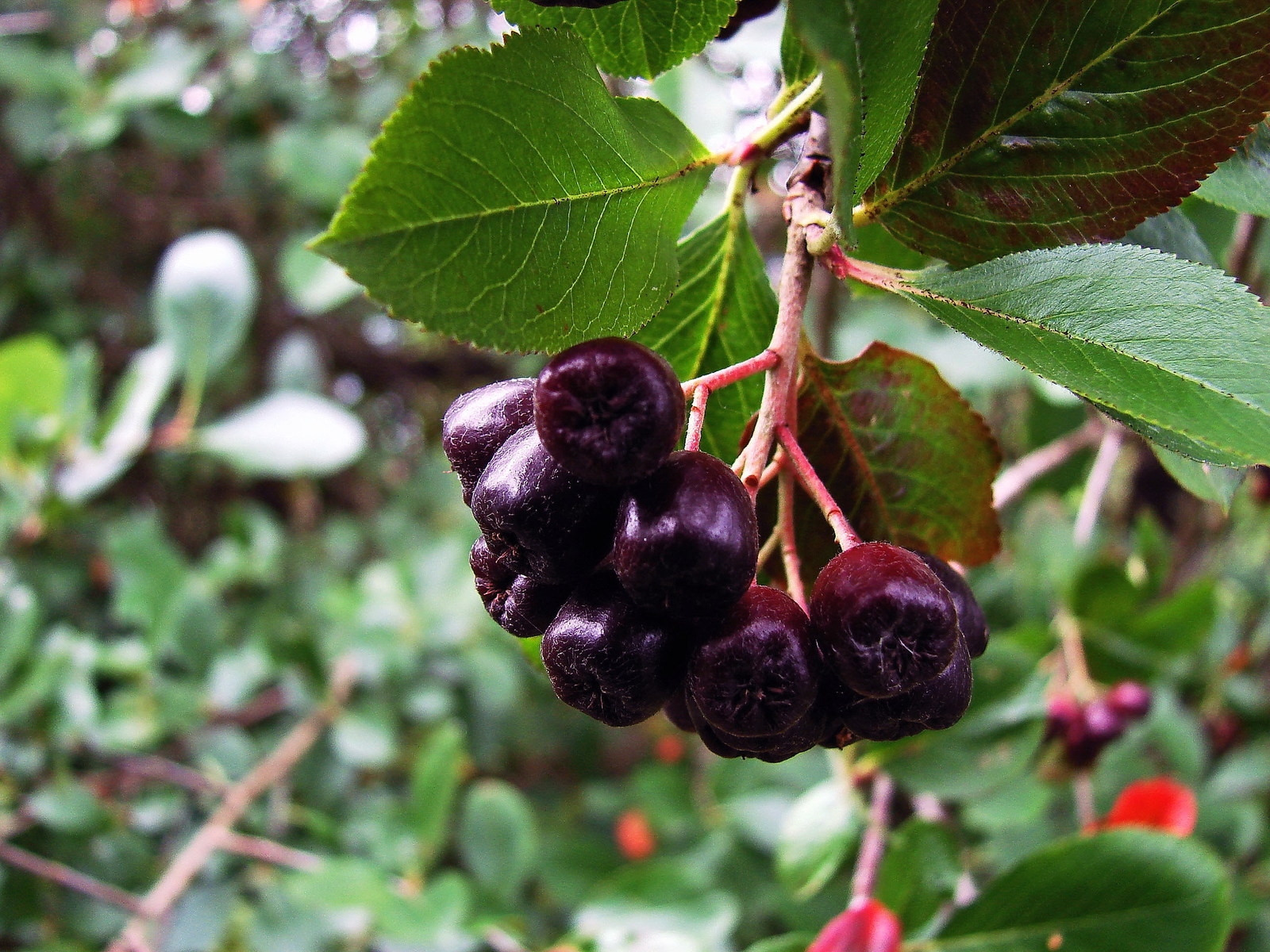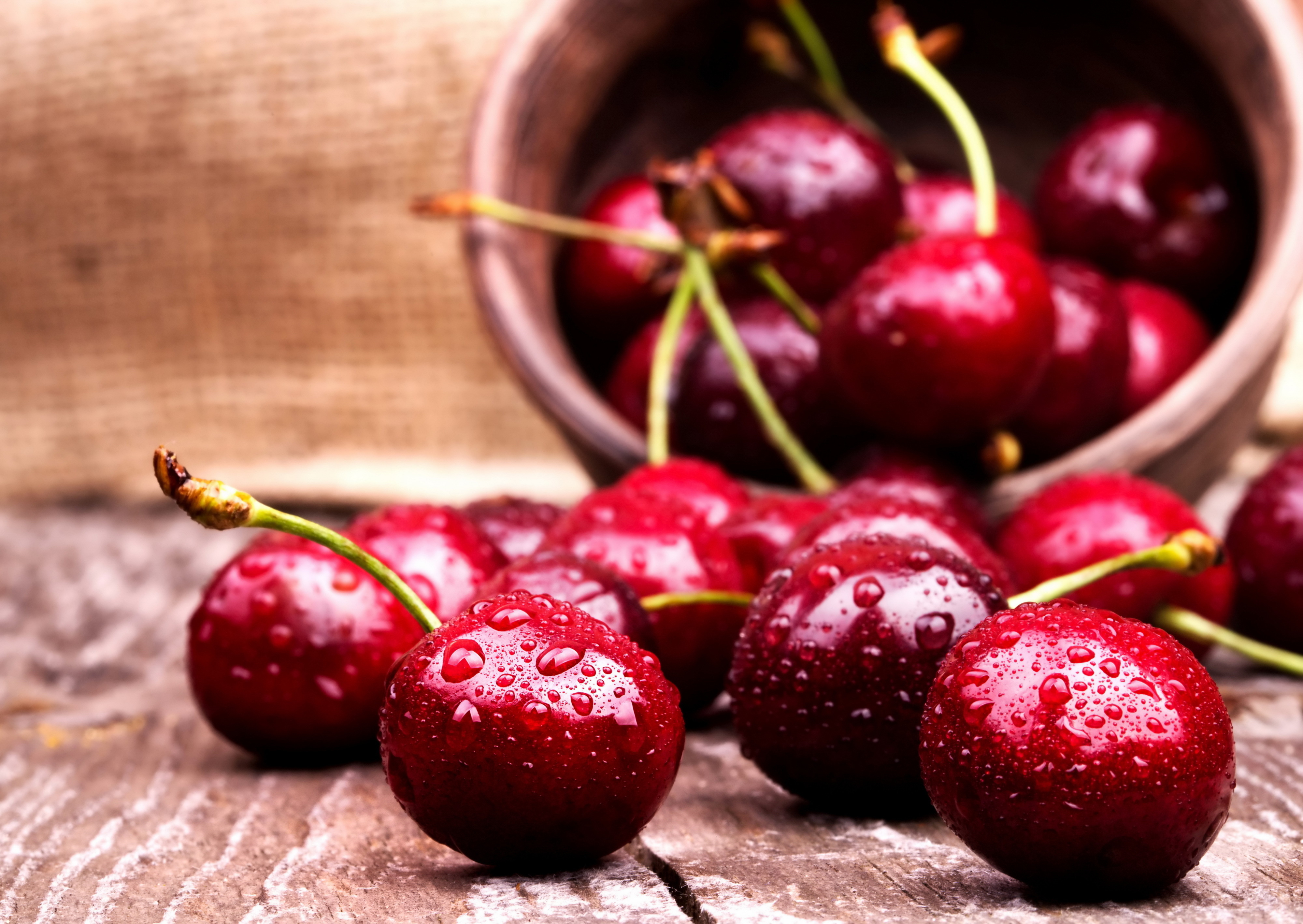Bobovnik is a beautiful tree widely used in parks and private gardens. Its highlight is a lush bright yellow bloom, as you can see in the photo. The inflorescences are collected in long brushes, which is why the plant has a different name - Golden rain. The flowering itself begins in May and lasts a whole month. The plant belongs to the legume family and when the time comes, it bears fruit - flat, shiny beans. A new tree can grow from each such seed.
Description of bean
Other name - broom... Its homeland is warm lands - Crimea, Caucasus and Central Asia. Therefore, legumes cannot be grown everywhere. But if you take good care of the plant, then you can also decorate the garden in the Moscow region with it.
Another remarkable feature of this tree is its pleasant aroma, which, combined with yellow flowers, creates a pleasant atmosphere in the garden. Exist brooms with white and pink flowering.
Bobovnik has three types:
- Alpine bean;
- Anagirolist bean;
- Bobovnik Vaterer.
The first type is distinguished by the height to which it can grow - 12 meters... His flower brushes are long, reaching 45 centimeters. At the same time, the plant is resistant to cold weather. Outwardly, it looks more like a shrub.
Anagirolist bean is a mountain plant. It is lower than the alpine broom and has fewer flowers. However, it also tolerates winter well. Its leaves can be of different shapes, and the flowers exude a wonderful aroma. It is this type that is most often used in decorating parks and gardens.
The latter is a hybrid. He combined the advantages of the previous two types. Bobovnik Vaterera smells good, blooms beautifully, and it does it twice a season. But this plant is not suitable for planting in a temperate zone.
How to care for a bean
The main thing to remember when planting broom is a plant loves the sun and does not like the wind... This must be taken into account when choosing a landing site for it. If a shadow falls on the tree, there will be few flowers. The wind will prevent the bean plants from blooming at all.
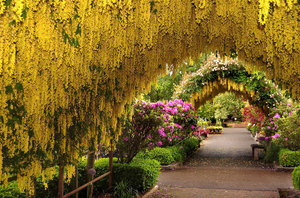 Bobovnik is contraindicated for stagnation of water at the roots, it grows well on poor soils. A little lime will not hurt the tree at all. The roots themselves are close to the surface of the ground, and care should be taken when weeding to avoid damaging them.
Bobovnik is contraindicated for stagnation of water at the roots, it grows well on poor soils. A little lime will not hurt the tree at all. The roots themselves are close to the surface of the ground, and care should be taken when weeding to avoid damaging them.
It is better to plant a tree in early spring. To do this, you need to place the seedling in the chosen place, add lime and humus to the hole, stick a pole next to it for support. It is better to sprinkle the space around the tree with mulch and water it. Beans are best planted in groups to protect them from the wind and cold. Then they bloom better.
After the flowering is over, it is better to remove the brushes with the beans so that the bean flowers bloom again next year.
Winter plant must be protected from cold weather... In some cases, caring for them consists in insulating the tree trunk. If a lot of snow has accumulated on the branches, it is better to shake it off so that the broom does not suffer. When spring comes, the frozen branches are removed.
It is better to feed the tree twice a year. In the spring, for growth, he needs nitrogen fertilizers, in the fall - potash and phosphorus for successful wintering.
If we talk about the Vaterer bean, it is worth noting that this plant is not suitable for wintering on the street, and caring for it is difficult. There is an option of planting the broom in special containers, which, when cold weather sets in, must be transferred to the veranda or covered greenhouse. However, this method is rather troublesome, since the containers are heavy.
& amp; amp; amp; amp; amp; amp; amp; amp; lt;! - cke_bookmark_62E - & amp; amp; amp; amp; amp; amp; amp; amp; amp; gt;
How to propagate legumes
There are several ways to breed broom:
- Using seeds;
- Cuttings;
- Layers;
- Graft;
- Division of the bush;
 The most common and easy breeding method is planting seeds... This can also happen involuntarily: the bean plant throws out its seeds around itself, from which new plants develop. They can be dug up and transplanted to a new location.
The most common and easy breeding method is planting seeds... This can also happen involuntarily: the bean plant throws out its seeds around itself, from which new plants develop. They can be dug up and transplanted to a new location.
The seeds themselves must be rubbed with sandpaper and sown into prepared furrows to a depth of 1 centimeter, and then sprinkled with earth. In three years the bean plants will bloom.
Propagated by layering. To do this, the branch of the plant is bent to the ground, fixed and covered with earth. After a year, it will turn into a full-fledged tree that can be transplanted. Bush division is also practiced by gardeners.
Hybrid bean usually propagated by cuttings and graftingso that their decorative qualities are preserved.
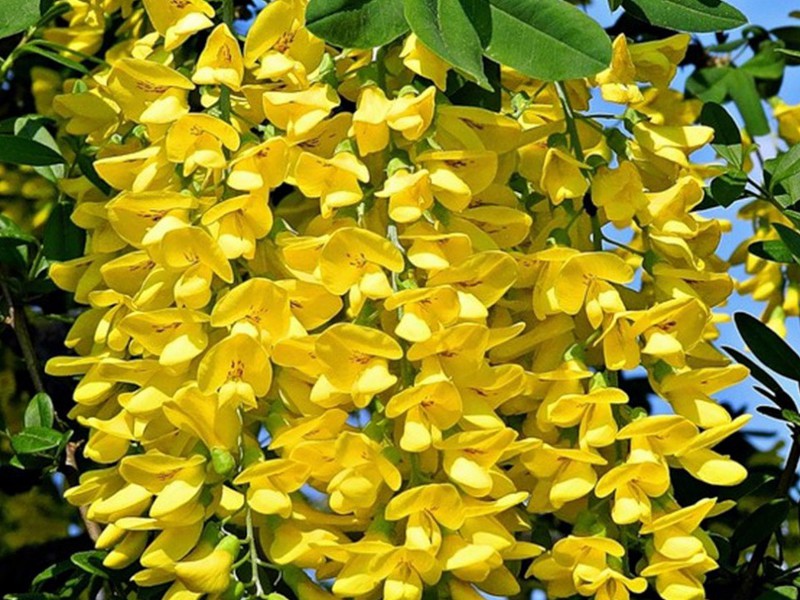
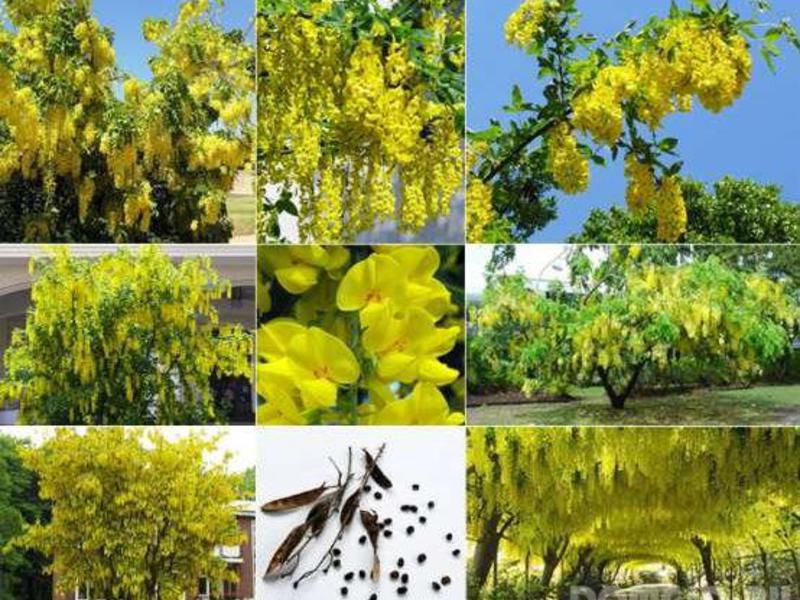
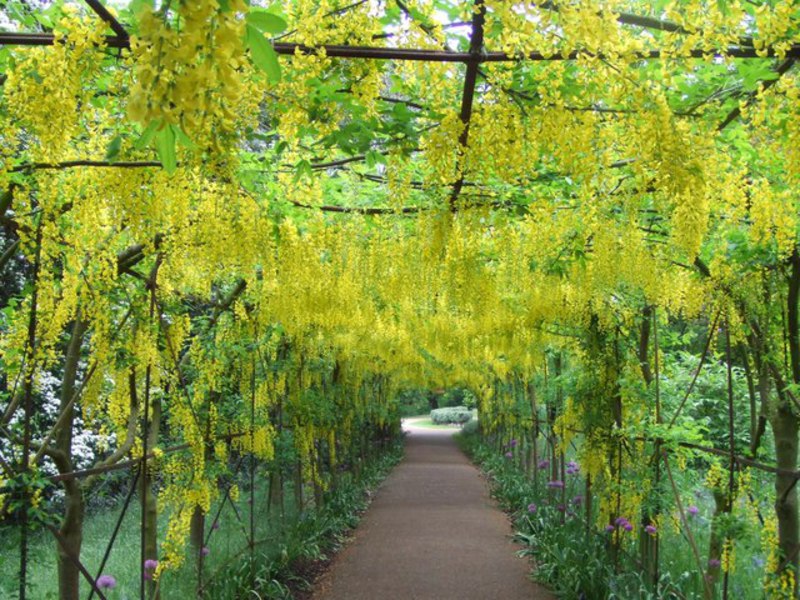
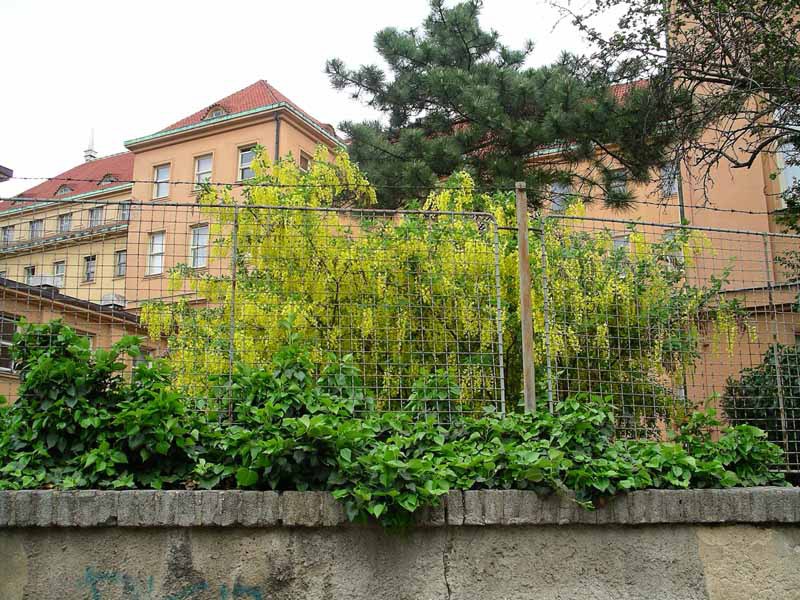
What are the diseases of the bean
The broom has one quality that can be called both useful and harmful. He's very poisonous. If the child only eats two spools of this plant, he may die. The toxicity, however, can play into the hands of gardeners. The plant practically does not suffer from a variety of pests.
The only attack that can happen to a tree is powdery mildew... Because of it, the tree can fall and lose its unique appeal. To make the broom as beautiful as in the photo, it should be treated with fungicides. When the first symptoms of powdery mildew damage to the tree appear, spraying the leaves should be stopped.
Using bean
Bobovnik has found application in various areas of life.
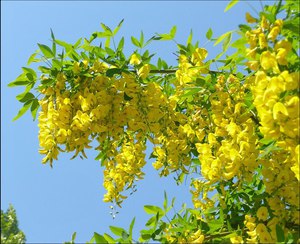 First of all, it is an ornamental plant. It is planted in parks and gardens. Designers prefer single or group landingsto enhance the impression of a golden shower, but lining up trees looks less impressive. It is important to choose which plants will be nearby. Someone prefers to plant broom next to conifers. Hawthorn, heather, wisteria, and so on are good neighbors. Bobovnik, Golden rain of parks, is an excellent honey plant.
First of all, it is an ornamental plant. It is planted in parks and gardens. Designers prefer single or group landingsto enhance the impression of a golden shower, but lining up trees looks less impressive. It is important to choose which plants will be nearby. Someone prefers to plant broom next to conifers. Hawthorn, heather, wisteria, and so on are good neighbors. Bobovnik, Golden rain of parks, is an excellent honey plant.
The wood of this plant is also beautiful. Musical instruments, sculptures, souvenirs are made from it.
The main disadvantage of this tree is its virulence... It is believed to be one of the most poisonous plants in Europe. Better not to plant it in gardens where children can play. Gloves should be used when transplanting or pruning to prevent the poisonous sap of the plant from getting on the skin.
